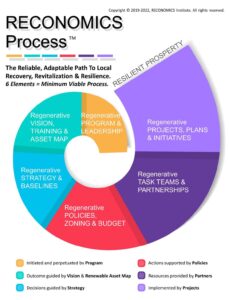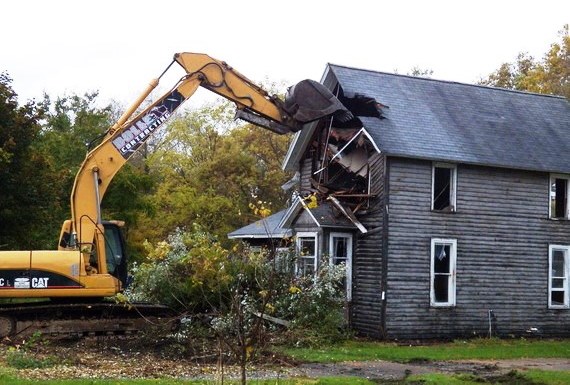Long-time readers of REVITALIZATION, and those who have read The Restoration Economy, know that I frequently criticize places that base their revitalization on the demolition of buildings that have been designated “blight”.
The problem is twofold:
- In many cases, these structures are reusable (the greenest building is the one that’s already built), and some have heritage value; and
- Too often, the agency conducting the demolition has no follow-up strategy: they are practicing the old “urban renewal” approach of “destroy it and they will come”. Demolition is a tactic, not a strategy, and a tactic that doesn’t serve a strategy seldom accomplishes much.
 Many land banks are guilty of both of those failures. In most cases, it’s not because they lack understanding, but because the state or federal funding they receive is for demolition, not revitalization.
Many land banks are guilty of both of those failures. In most cases, it’s not because they lack understanding, but because the state or federal funding they receive is for demolition, not revitalization.
People tend to do what they’re paid to do, so we need more enlightenment regarding strategic revitalization processes on the part of state and federal policymakers and lawmakers.
That was part of my message when I (Storm Cunningham) keynoted the annual conference of the Michigan Association of Land Banks about three years ago. Michigan is where land banks were invented, so here’s some land bank news regarding demolition—and (I hope) revitalization—from the city of Newaygo.
They are moving forward with plans to redevelop parts of their downtown as a result of demolition of three blighted buildings, the State Land Bank Authority announced on October 25, 2019.
“The Michigan Rural Community Demolition Grant has afforded locals the opportunity to develop vibrant communities,” State Land Bank Interim Director Jeff Huntington said. “It’s great to see a city like Newaygo reap the benefit of these funds and the new economic opportunities blight elimination will have for them.”
Demolition of these buildings is funded by the Michigan Rural Community Demolition Grant awarded to Newaygo in April. Nine communities received a total of $350,000 to eliminate blight to prepare for future developments that spark business investment and provide job opportunities for residents.
Prior to the grant award, the buildings sat vacant for three years and the city was unable to fund demolition and move forward with redevelopment.
“Partnership with the State Land Bank has been a key component in preparing the properties on Wood Street for future development. Removing the blighted structures creates a clean slate for expanding our downtown,” Newaygo City Manager Jon Schneider explained.
The city plans to build a mixed-use space to include commercial offices on the ground floor and one to two floors of residential units. City officials are working to secure a developer for this project which is slated to begin in early 2020.
Demolition was completed October 24, 2019 by Bolle Construction.
Nine communities were awarded Michigan Rural Community Demolition Grant funds, as previously reported here in REVITALZIATION. In addition to Newaygo, seven additional communities have completed their demolition projects.

